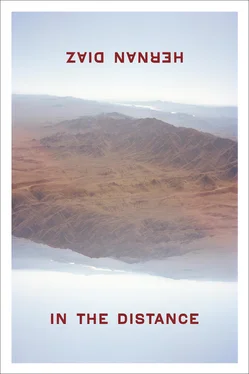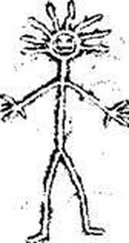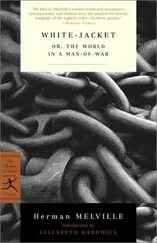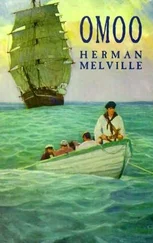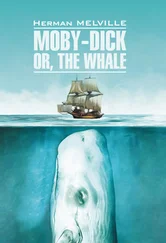Seeking to avoid further encounters with the last stragglers on the trail and looking for milder weather, Håkan headed south, always with a slight slant east. Winter was a giant wave gathering in the distance, surging over the plains, ready to break and wash away the minute rider in a whirlwind of darkness and ice. Already, the shadow cast by this massive wave had caught up with him. The days had grown shorter. The sun had lost its authority. The brown grass was crisp with frost. Firewood became immune to tinder. Water lapped under glass cobwebs. Game grew scarce. Provisions had to be rationed. He ate different plants that got him sick, until he finally found a succulent stalk that he would grind with the butt of his knife into a bittersweet, slightly salty pulp that reminded him of the licorice candy his mother had given him with great ceremony three times in his life, and that he had pretended to like. For some time, he ate crickets, but soon the supply grew scant until they all vanished completely as the cold set in.
Since he had only a few blankets to wrap over the hodgepodge of an outfit the Indians had made him, peltries quickly became as valuable as meat. Most animals had migrated south or holed up for the winter, but some dogs, rodents, and cats still rambled around, their eyes convex with hunger and despair. He caught his first badgers and rats with a deadfall trap. Smashed to a mass of hair and flesh under the heavy rock, the smaller creatures—most of his catch—were hard to skin and impossible to eat. One afternoon, as he was discarding a particularly damaged rabbit, he remembered his father’s glue. A few times a year, his father would gather the skins and carcasses of dead animals (mostly mice and hares snared around the house, although he had once used parts of an elk he had found rotting in the forest), scrape the hides, and boil the shavings together with bones, tails, and tendons for a couple of days, adding as little water as possible, until it was all reduced to a viscous syrup, not unlike resin. He would then remove the bones and use the paste for minor repairs. Once, particularly satisfied with the results, he challenged Linus to split up two planks he had bonded together with his concoction. Linus—proud of being treated like an adult and, moreover, eager to perform a feat of strength—grabbed the planks and, without any visible effort, snapped them asunder. It was so quick, he was unable to even blow out the big breath he had taken in preparing for the effort. After the initial surprise, Linus smiled proudly, until he looked up and saw their father’s face. He told the boys to clean up the mess, then turned around and left. Even if the glue was not strong enough for wood, Håkan thought that it might be used to hunt small game. The main obstacle for making the paste was to keep a fire going for all that time—not only because of the scarce firewood and the intense wind, but mainly because it increased his chances of being seen. Having spent the next few days stocking up on fuel, he devised a screen out of blankets and tarpaulins that had the double virtue of shielding the fire from the wind and concealing its glow through the night. After boiling down the shavings and scraps of his pulped prey for almost two days, he poured the glue on a piece of oilcloth and baited it with biscuits. The first victim, a gopher, managed to escape. A second gopher also broke free from the sticky trap but was slowed down enough for Håkan to be able to deal a clean blow to its head. Most animals, although confused by the sudden thickness under their feet, succeeded in fleeing with their biscuit. Even if he was disappointed, Håkan felt closer to his father with every defeat. In time, however, between the deadfall and the glue (which, once cool, became an amber block that could be melted and reused over and over again), Håkan managed to catch a decent number of prairie dogs, ferrets, weasels, badgers, rats, hares, and even small dogs.
He started making a coat out of the pelts. All the dissections Håkan had performed under Lorimer’s supervision had turned him into a consummate skinner. With no more than a few incisions, the furs almost slid off the frame, as if they had been lined with silk and the flesh they covered had been made of wax. In some cases, he was able to leave the empty skin almost intact, which gave the impression that the body within had simply melted and evaporated. After skinning his prey, he scraped off the flesh and fat from the hides and strapped them up to dry across his horse’s saddlebags and the burro’s croup. Remembering those Indian women he had seen tanning buffalo hides while their husbands lay unconscious from drink, Håkan rubbed the brains of the freshly caught animals into the stiff furs to soften them. Since most of the brains were so small, he mashed and mixed them with water. During a drought, he discovered that his urine produced better results.
After some pounding, the dry sinews from the larger animals split into fibers that Håkan separated and used as thread to stitch together the disparate patches of cured leather with his surgical needles. It was a slow process (hunting, curing, threading, sewing), and the first snow had already fallen. Without a gun, there was no hope of getting one of the last few bears or larger cats he sometimes saw in the distance eating the carrion he had left behind. He once smeared himself with gore and lay down, pretending to be wounded, hoping to knife a bobcat that was on his trail. The bobcat never came. Not too many days later, however, something better made up for this failure.
Through the light snowflakes that melted before touching the ground came the cry of a baby. As always, Håkan’s first reaction was to wrestle his horse and burro down. In the mist, the weeping continued. The small, airy drops felt like a cold halo hovering over his face, contrasting with the warm glow coming from the horse’s muscles twitching under his cheek. No voices of men or women. No jingling of harnesses or creaking of springs. No rumbling of wagons or tramping of beasts. Just the lonely wail. Håkan’s horse got restless, but he pressed on his neck and made him stay down. A long time went by. The weeping never stopped, always issuing from the same spot in the white mist. Other than the cries, complete silence. It stopped snowing. The fog thickened. Cramped and soaked, Håkan got up, mounted his horse, and rode into the crawling clouds. With each step, the wails grew louder. The plains barely insisted against the fog. Håkan got out his knife. As he moved along, the ground ahead of him faded into reality from the whiteness ahead. Then, in a slight depression by some shrubs, a lion took shape. It was lying in a pool of its own blood, lightened by the snowfall. Next to it, a wailing blind cub. It was getting hoarse. Håkan dismounted and immediately saw that the cougar had died trying to give birth to its second, breached offspring, still stuck halfway out. Håkan rolled the mother over and put the crying kitten to one of her teats. From its outstretched hind legs to its head, the lion was taller than Håkan. The cub nursed greedily. After a few moments, realizing that nothing came out, it started crying again. Håkan tried to milk the lion. Then, he went through his provisions and offered the kitten everything he had—charqui, sugar water, dried meat from different animals, oats, bacon, and moistened biscuits. Håkan now heard rage in the cub’s desperate cries. He made a cut into his own forearm and put the kitten’s snout to the blood, but it would not taste it. Håkan looked into the crying mouth and saw the ribbed vault of the palate, the sharp little teeth, and the white scales on the pink tongue. He smelled the clean breath coming from the empty stomach. Then he looked into the creature’s watery eyes and wrung its neck. Mother and cub were skinned.
Читать дальше
